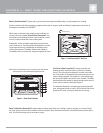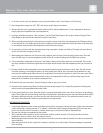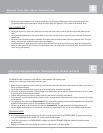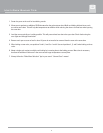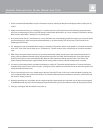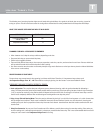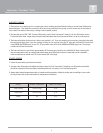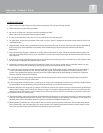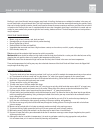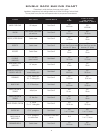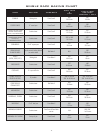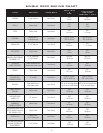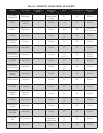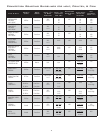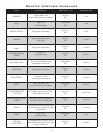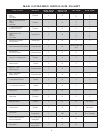
Broiling is a quick and flavorful way to prepare many foods. In broiling, the heat source radiates from above in the oven cell
to cook foods with a dry and intense heat. This high heat keeps the juices inside the meat while browning the outside. Foods
that can be broiled should be tender, should have some fat content to preserve moisture and flavor, and should be an individ-
ual portion size. Broiling in the oven is completed with the oven door completely shut. Keep in mind that it is normal and nec-
essary for some smoke to be present to give the food a smoky, barbecued flavor. The broil temperatures and rack positions
may be adjusted.
FOODS THAT CAN BE BROILED:
• Meats, such as beef, chicken, veal, lamb, and pork
• Sausages (Be sure to puncture the skin to prevent bursting)
• Bacon (broiled flat or rolled)
• Seafood (Both fish fillets and shellfish)
• Vegetables that are tender and have a high moisture content, such as onions, zucchini, squash, and peppers
• Garlic breads, toasts, etc.
Thin items should be cooked at high heat and as quickly as possible.
Medium thick items should be started on high heat to sear the food, then finished in a cooler part of the broiler/oven cell by
dropping the rack position down or by lowering the temperature of the broiler.
Thick items should also be started on high heat to sear the food, then finished in the oven at a lower temperature.
Times and temperatures for broiling may vary due to desired doneness of the food. Foods will often have to be flipped half
way through the broiling cycle.
TIPS FOR SUCCESSFUL BROILING:
1. The broiler needs only a few minutes to preheat. It will cycle on and off to maintain the temperature that you have select-
ed. The element is on when a small red icon that shows “on” with a box around it appears on the control panel.
2. Bring foods to room temperature for about 15-20 minutes before broiling. Chilled foods will reduce the temperature under
the broiler. The product will not brown/ sear as well.
3. To keep meat from curling, slit fatty edges.
4. Trim the outer layer of fat from steaks and chops.
5. Cuts of meat that are too thin (smaller than 1/4”) may dry up too quickly, while foods that are too thick (2” or larger) may
only sear from the outside and remain raw in the center. Please refer to the above section that addresses thin/ thick.
6. For best results, thicker cuts of meat should be placed about 4” – 6” away from the broiler.
7. A 2-part broiler pan (provided with the unit) should always be used. This allows for fats to drip down into the pan below,
reducing smoking and spattering. Using a sheet pan instead of the broiler pan may cause fats to be redirected into the
heat, causing flare-ups.
8. Aluminum foil may be used on the bottom portion of the 2-part broiler pan only. If foil is used on the top slotted piece
(grill), fats are not allowed to drain properly, resulting in flare-ups, smoking, and spattering.
9. It is best to use tongs to flip the food item half way through the cooking process. Piercing the meat with a fork allows
juices to escape.
10. Meats can be brushed with oil or butter to maintain moisture and aid in the searing process.
11. To prevent sticking, lightly grease the broiler grill. Excess grease will result in heavy smoking.
12. Marinating meats, poultry and seafood is an excellent way to retain flavor in broiled foods.
13. Be sure to center the broiler pan underneath the broiler for maximum coverage-center the pan lengthwise, then push it
all the way to the back.
14. Although the broiler is variable in temperature, it is easier to get better results by using appropriate rack positions.
It is an intense heat, so it is easier to control by lowering rack positions.
GAS INFRARED BROILING
11



